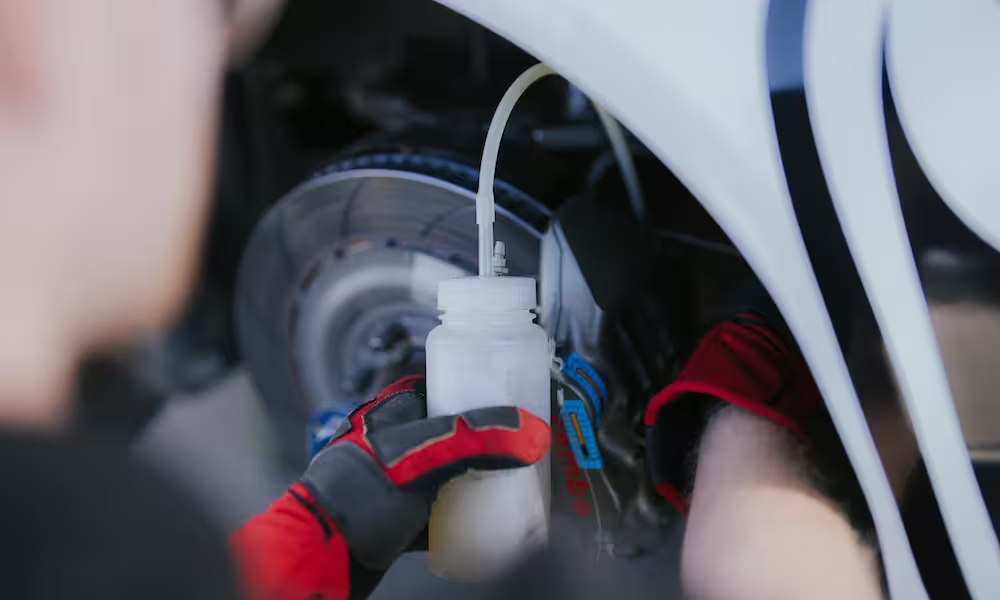Brake fluid is one of those overlooked items of motorsport technology that has a profound impact on racecar performance. Its purpose is to ensure the brakes maintain their optimal functionality from start to chequered flag. That isn’t straightforward when you consider the high temperatures exerted on a racecar’s mechanical components and systems.
Brake fluid transfers the force of a driver pressing the brake pedal through to the callipers, which reduce the speed of each wheel. When the driver hits the pedal, pistons in the master cylinder compress, releasing brake fluid under pressure towards the braking system. There are several characteristics whose properties a motorsport brake fluid must sustain over a wide temperature range to ensure the brakes give consistent, predictable feedback to the driver. The main ones are boiling point, compressibility, lubricity and viscosity.
Halo by Orthene, a UK-based racecar brake fluid manufacturer that supplied this year’s LMP2 winner at the 24 Hours of Le Mans, has helped to explain how these characteristics can be managed.
High boiling point
Brake fluid needs to have a high boiling point, otherwise it will result in vapour lock, which causes the callipers to no longer respond to the driver’s action due to the presence of a gas in the brake system. This could potentially result in a high-speed accident due to lack of deceleration.
Most racing brake fluids have a dry boiling point of at least 300degC, but there is scope to go higher. For example, Halo P1 has a dry boiling point of 341degC. This ensures the fluid can handle the high brake temperatures, which have increased across several series in recent years with the addition of heavy electric and hybrid powertrains that add stress to the brakes. Research continues regarding racecar brake fluids that can exceed the current maximums. Halo’s parent company, Orthene, once set the boiling point record at 320degC but that has since increased by more than 20degC with the P1 product.
‘I think there is potential to develop it quite substantially,’ says Daniel Stafford, chief development chemist at Halo by Orthene. ‘Cars are getting heavier, but drivers still need good pedal feel regardless of powertrain. We will have a second-generation product that will undoubtedly have a higher boiling point. But the main focus is actually on maintaining low compressibility, across the operating…
Click Here to Read the Full Original Article at Racecar Engineering…

